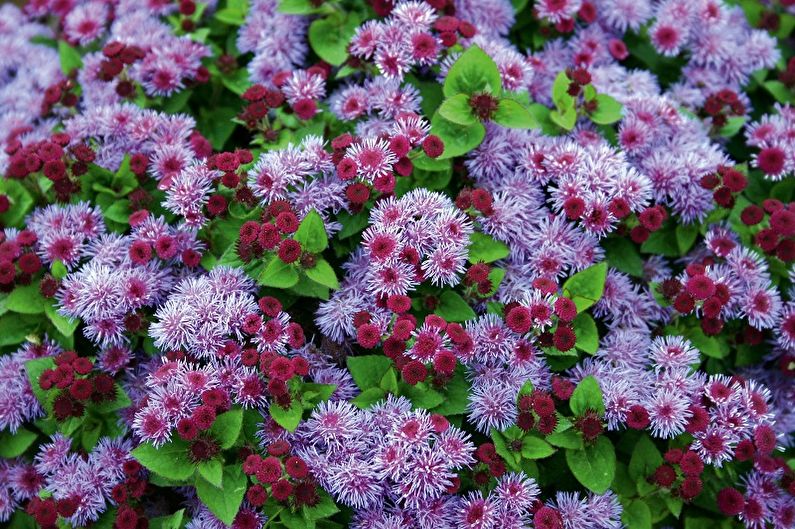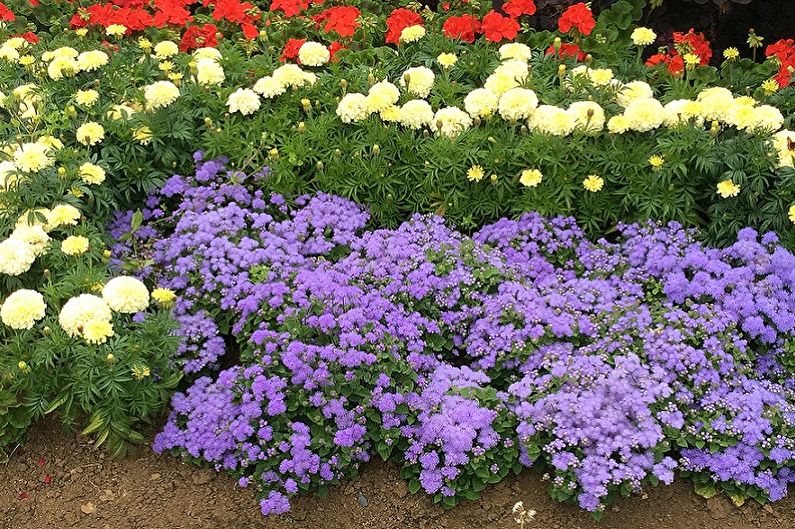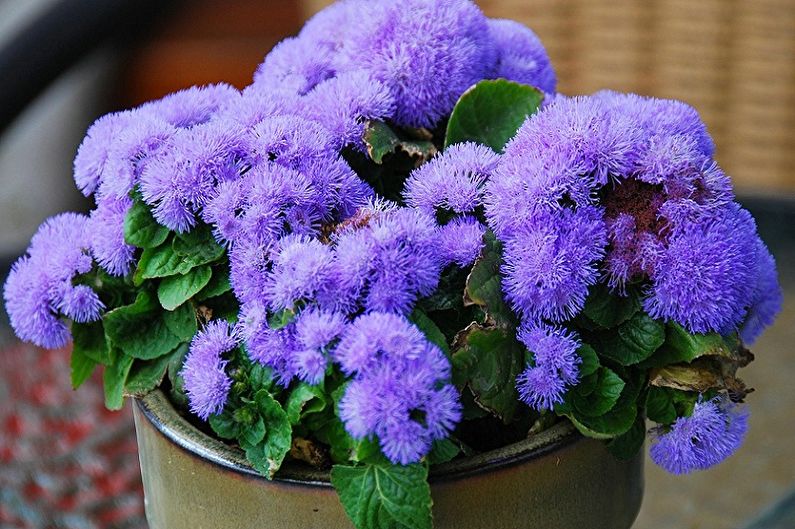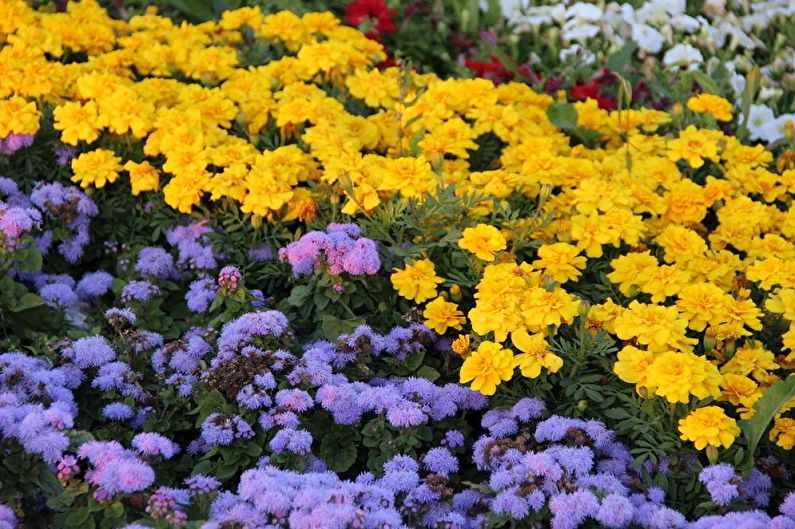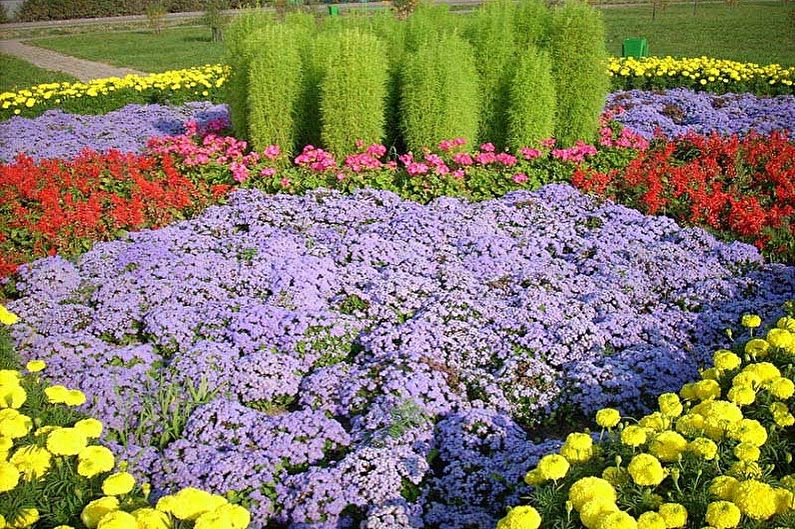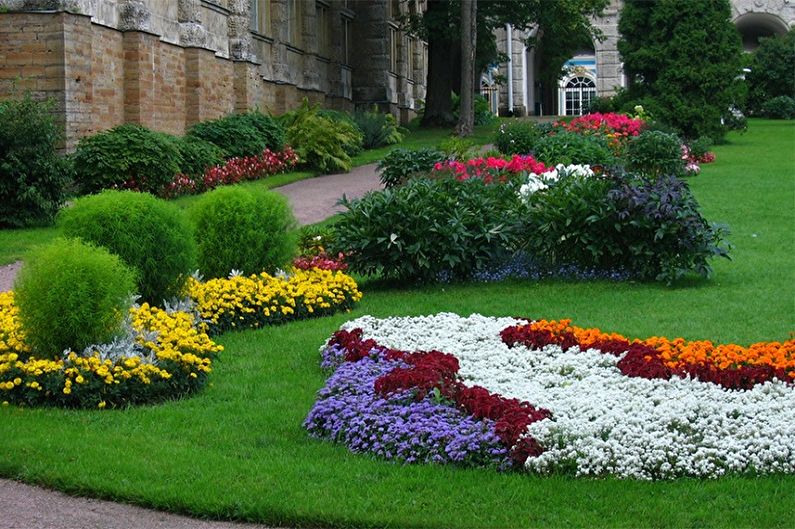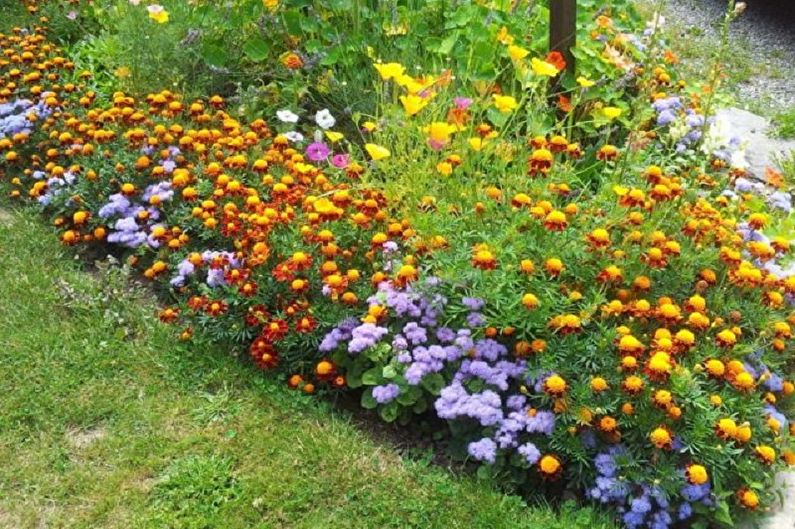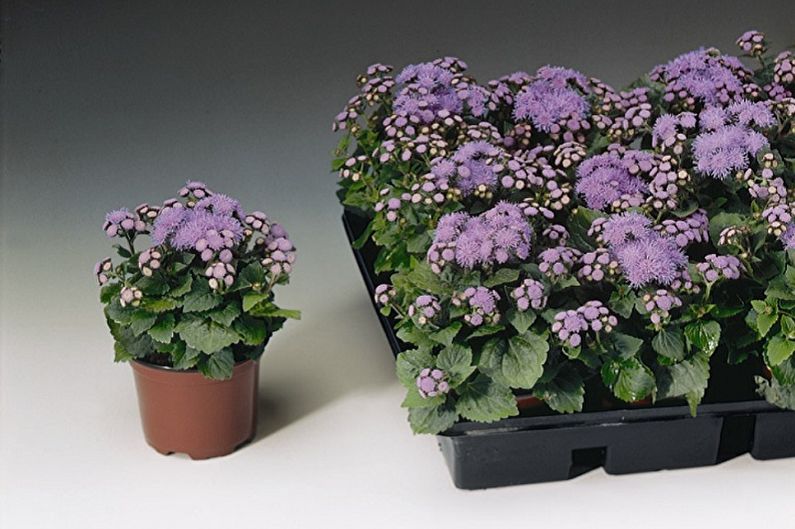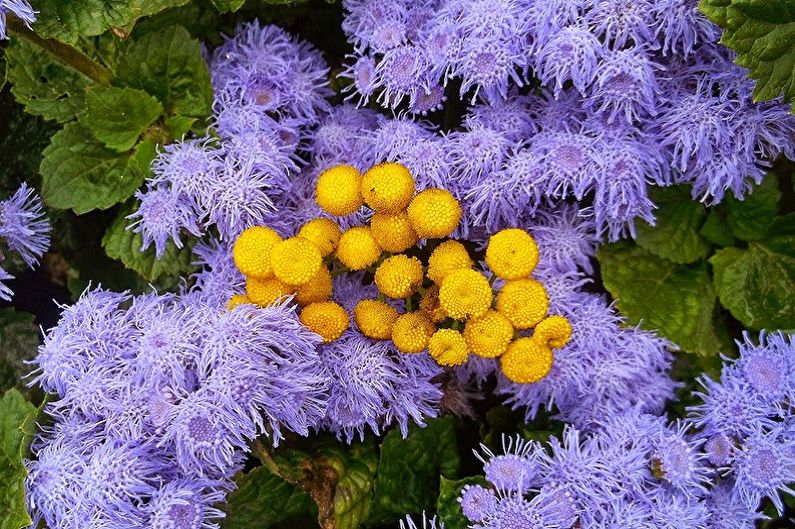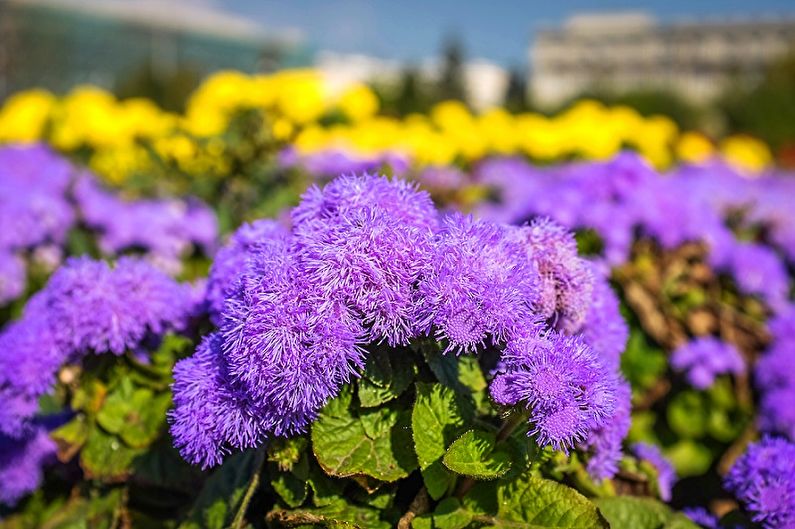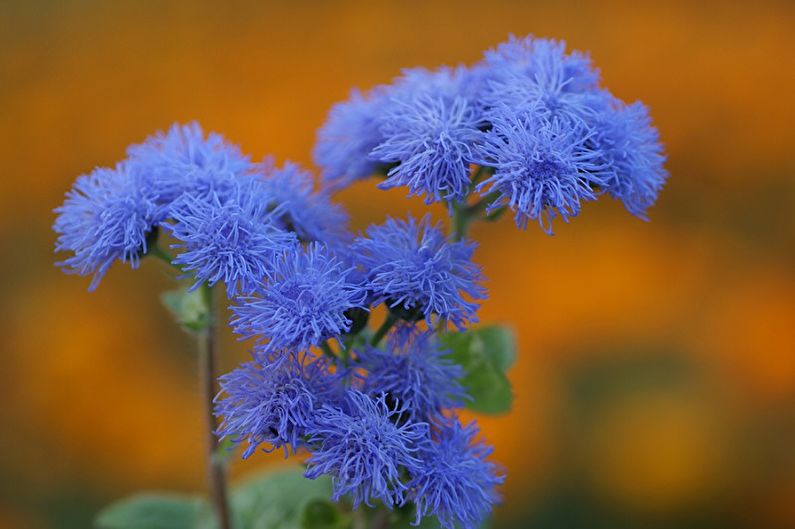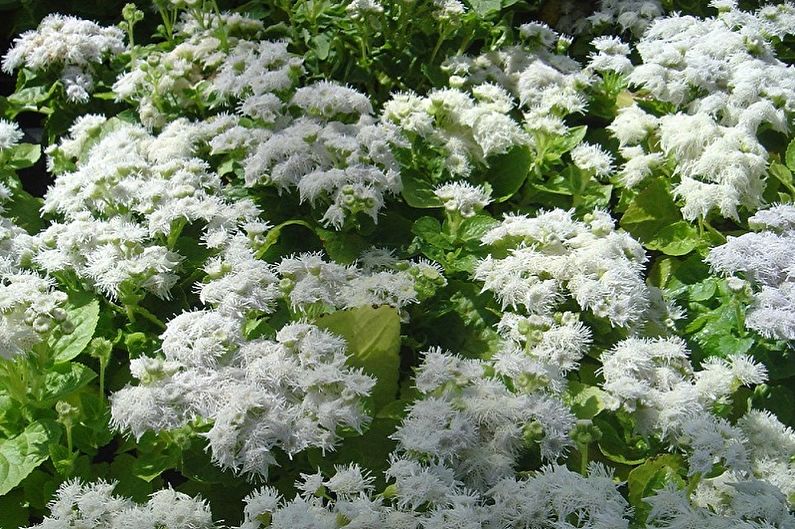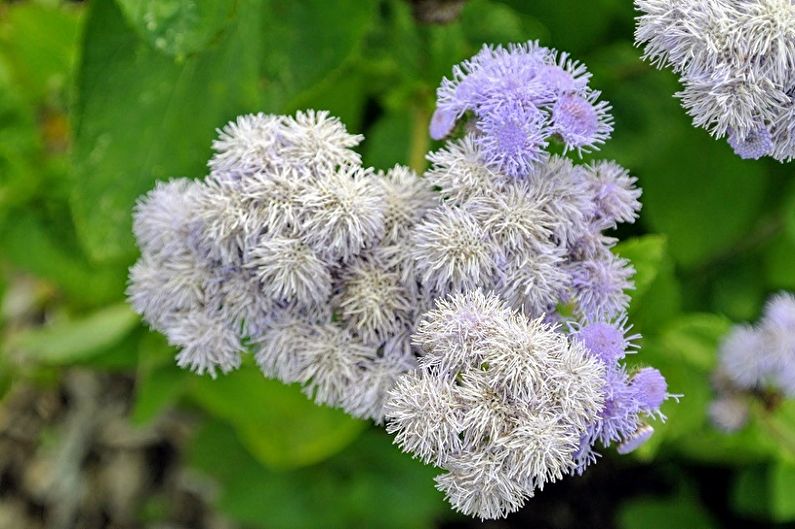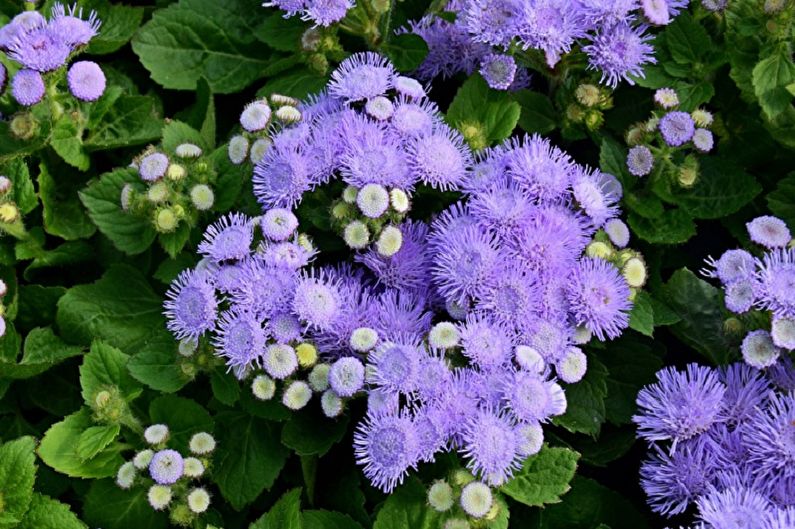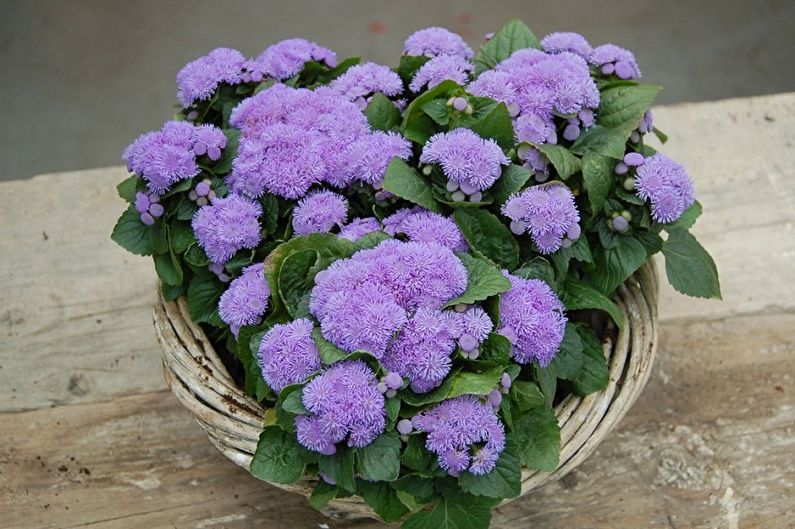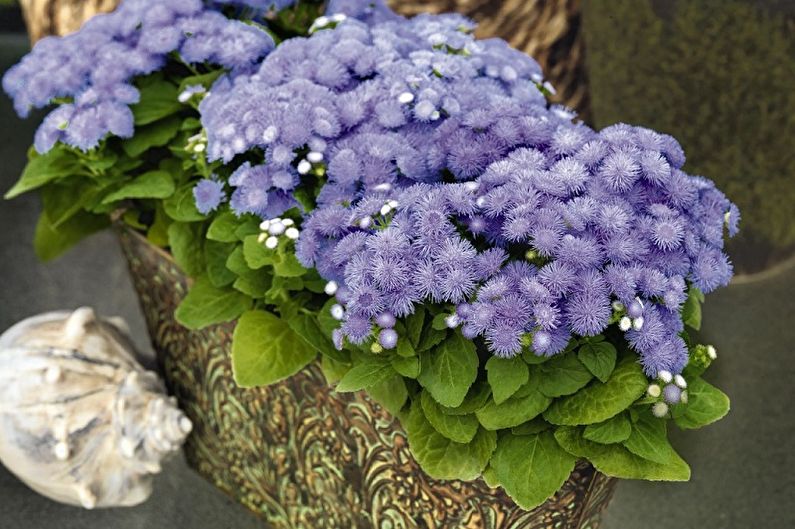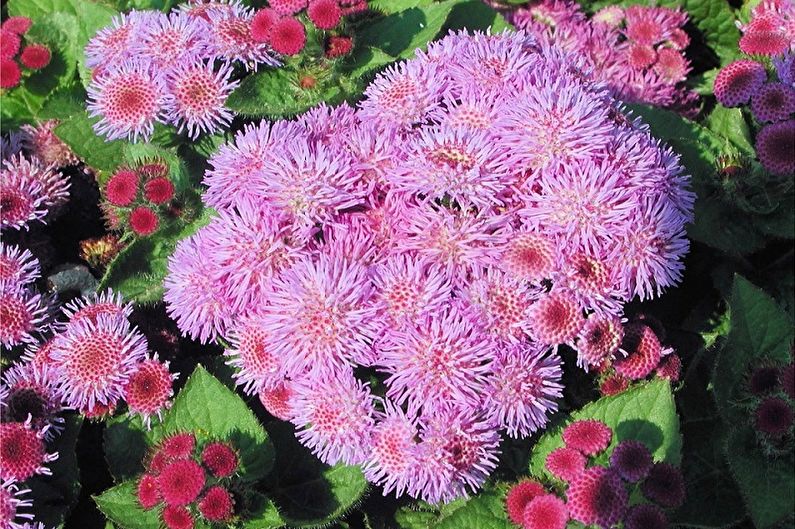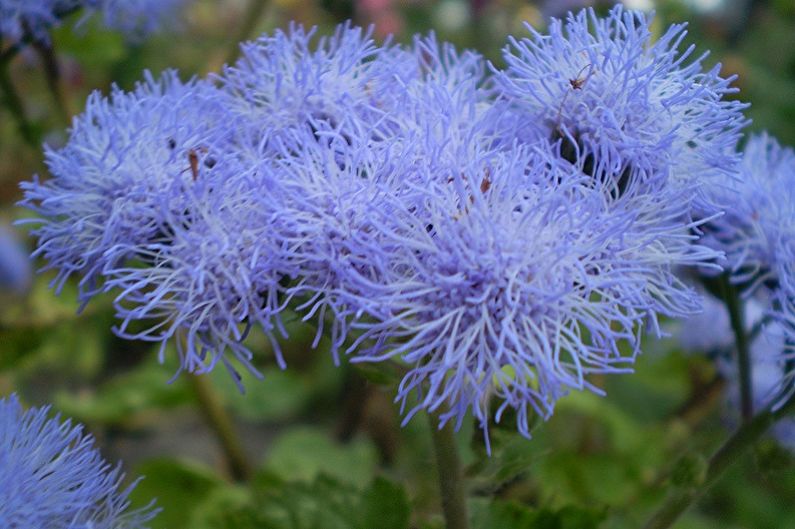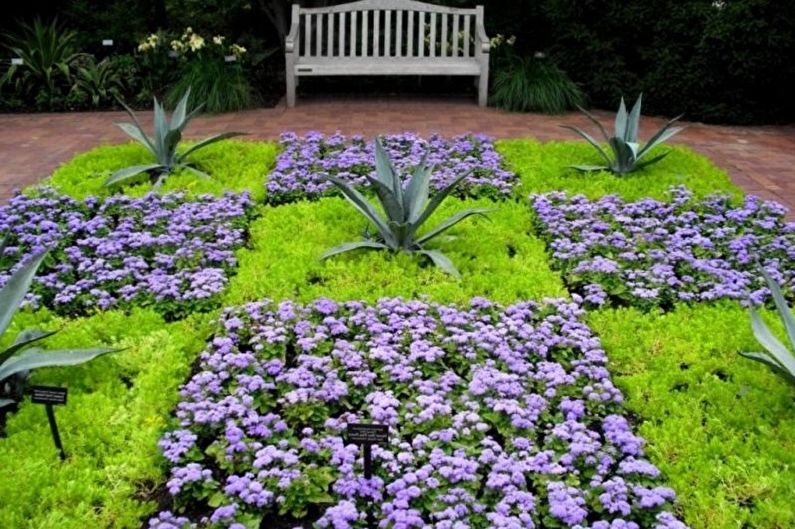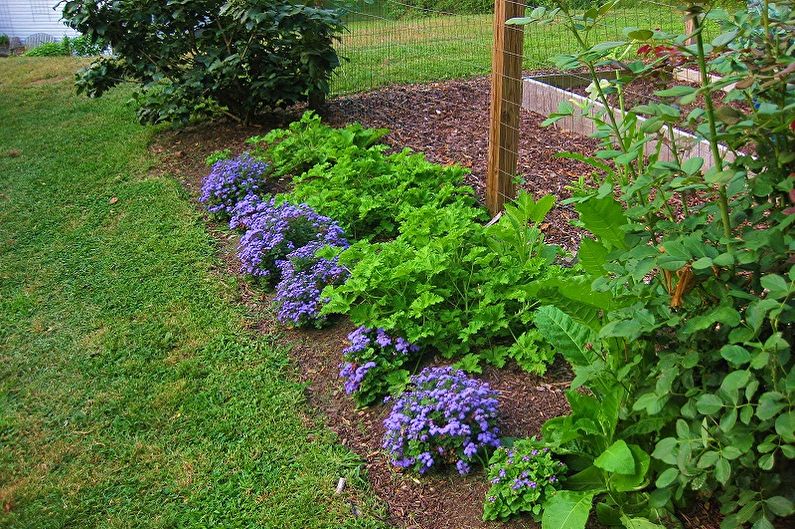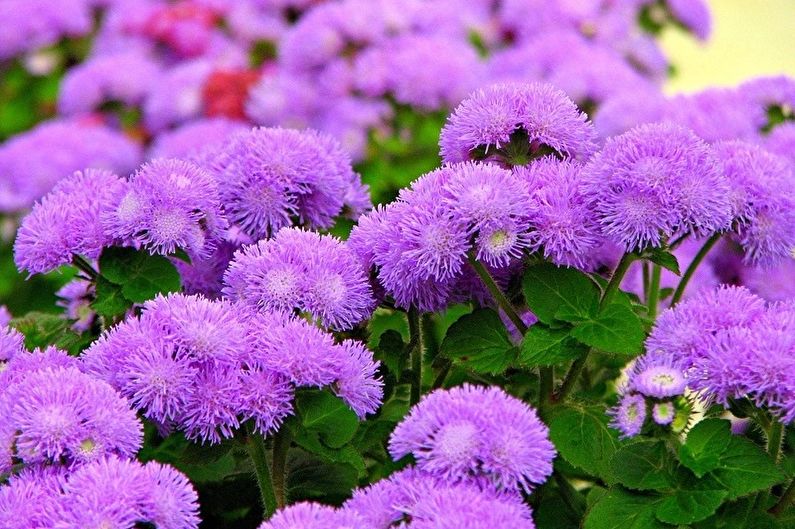
Ageratum is an excellent ornamental plant that, when mass planted, can create a stunning multi-colored fluffy carpet. Its name, translated from Latin, means “ageless”, which is quite understandable by prolonged flowering - from June to frosts. The main advantages of the ageratum are excellent aesthetic qualities and a simple process of cultivation, care. Due to such characteristics, it is widely used in decorating house territories and creating landscape delights. Flowerpots with undersized grades perfectly decorate loggias, balconies and terraces.
The main types of ageratum
In the natural environment, there are about forty species of this culture. However, the basis for cultivation is the most common species - the Mexican or, as it is also called, Houston’s ageratum. He became the progenitor of a mass of new decorative varieties. Its winding stems form the shape of a spherical bush, the sizes of which range from 15 to 60 cm. Inflorescences located on the upper parts of the branches have a large palette of shades. For home cultivation, a number of varieties most popular among gardeners are used, with the help of which a personal plot or home interior is filled with lush colors.
Alba
This variety of ageratum is a spherical bushes up to 20 cm high, characterized by fluffy snow-white flowering buds resembling pompons. The variety is often used to decorate live borders, it is planted along the edges of flower beds in the vicinity of marigolds, marigold, cleome, etc.
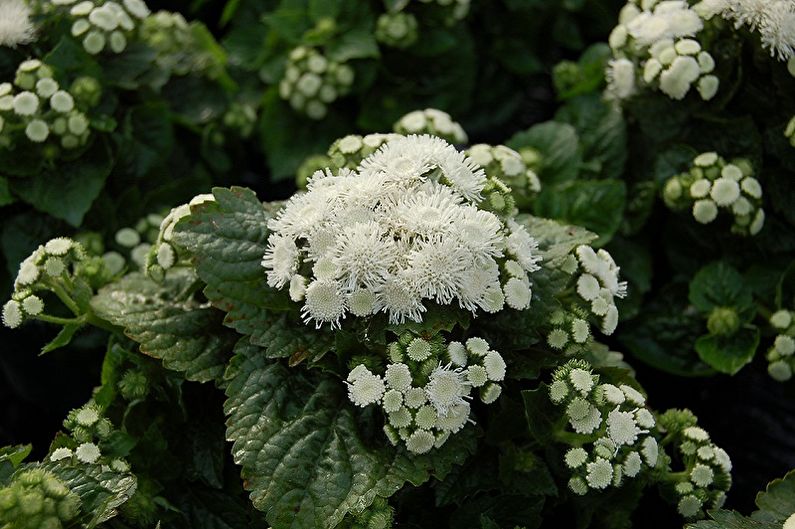
Blue mink
A small shrub, the height of which is not more than 25 cm, looks quite dense. It is covered with dense green foliage of branches crowned with blue inflorescences resembling hats. This is one of the old cultivated varieties of ageratum, but not losing popularity and relevance. Bushes are often planted in flower beds to create the main background, and they also make out tracks.

Blue bouquet
The plant has erect or lodging stems, the height of which reaches 45 cm. The buds bloom with bright blue flowering.
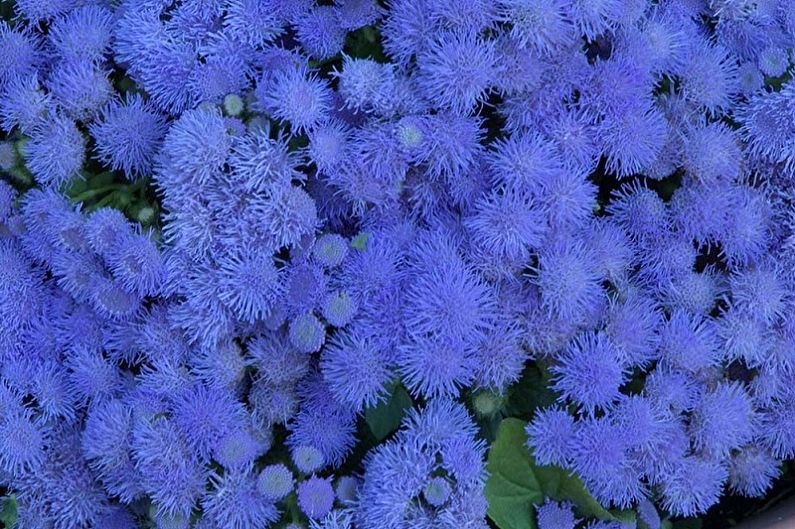
White ball
The variety has long creeping branches. By the end of July, snow-white inflorescences 1.5 cm in diameter bloom on them. The bushes themselves do not exceed 25 cm. They look excellent in the neighborhood with flowers of red, blue or purple hue.

Pink fire
Neat compact shrubs, reaching a height of 30 cm in adulthood, have rather small foliage, but large bright pink inflorescences perfectly dazzle against its background. This variety is great for creating mass plantings, and is also used to attract butterflies. Bushes are often grown in pots, decorating them with terraces and patios.
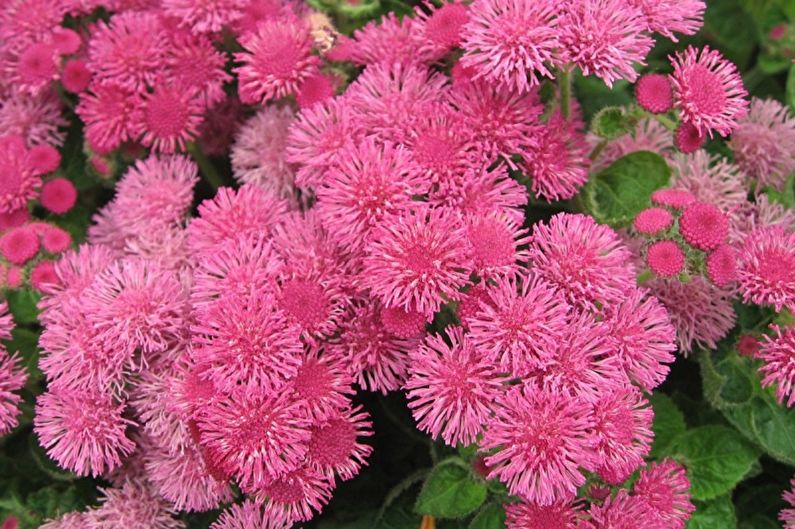
North Sea
One of the smallest varieties - the height of the bushes reaches 15 cm. During flowering, these “kids” look amazingly beautiful, opening their dark purple buds.
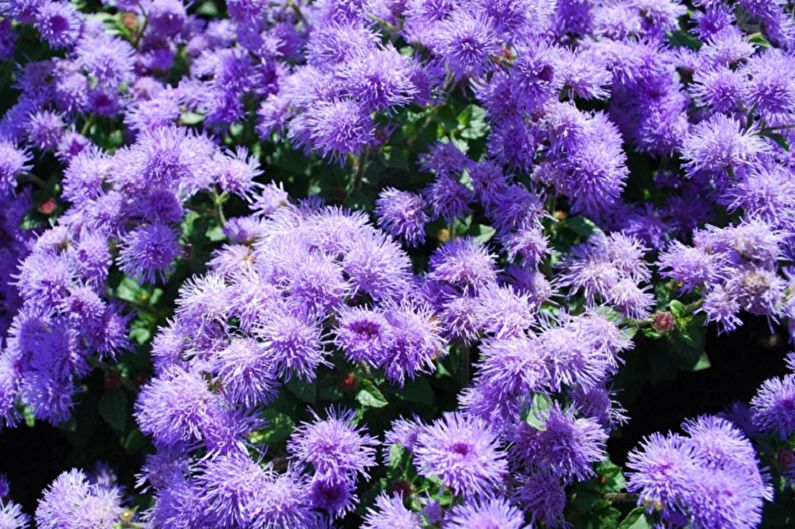
Proper care of the ageratum
Ageratum can not be called a demanding plant. It feels great in any soil, with the exception of especially “oily” soil, with a high humus content - this leads to the growth of branches and the absence of buds. There are also some recommendations that should be followed so as not to cause plant disease and its death.
Lighting
High-quality lighting can be called the main factor for productive crop cultivation. Only in fully open sunny places can one observe the long lush flowering of bushes.In the shade, the plant loses its neat shape, turning into a shapeless bush with nondescript inflorescences. Due to its ability to tolerate summer heat, the ageratum is often used by landscape designers to decorate open flower beds.
Low-growing varieties adorning the balconies and loggias of apartments are better placed on the southern sides, and in winter equipped with backlighting with fitolamps.
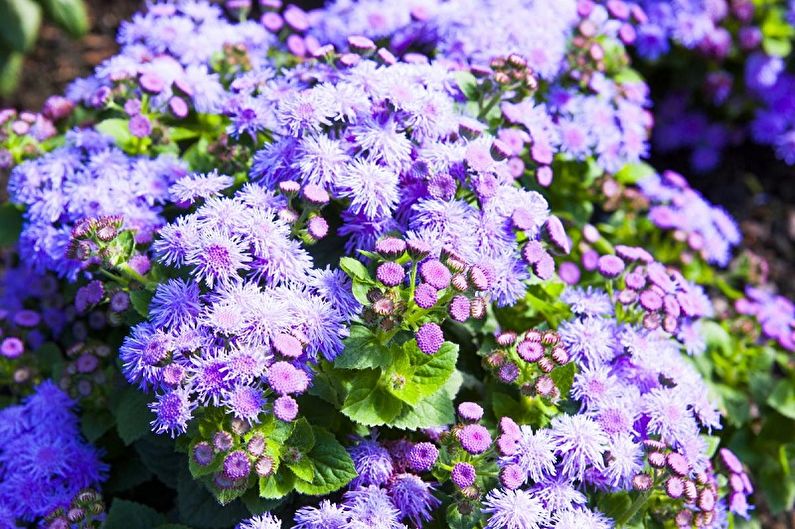
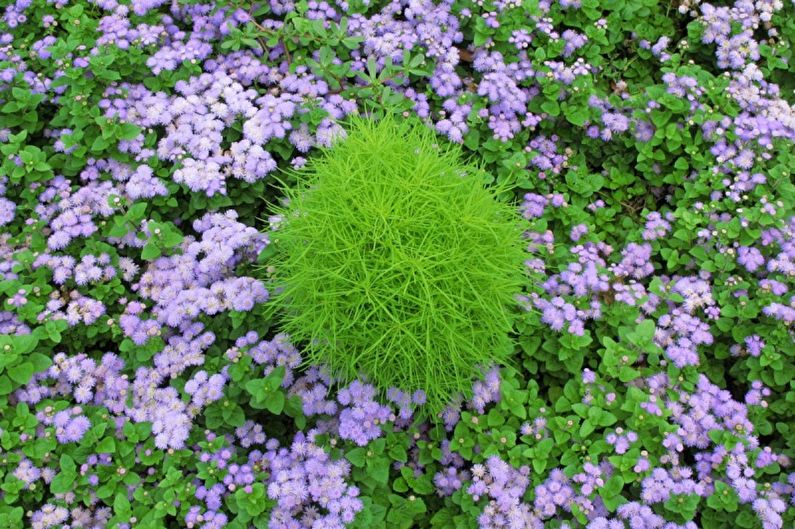
Temperature
The plant is able to withstand extreme heat, and when the air temperature drops to + 1C it can die. With the onset of persistent autumn cooling, the best solution would be to dig a bush and transplant into a room pot until spring, arranging it in a well-lit place.
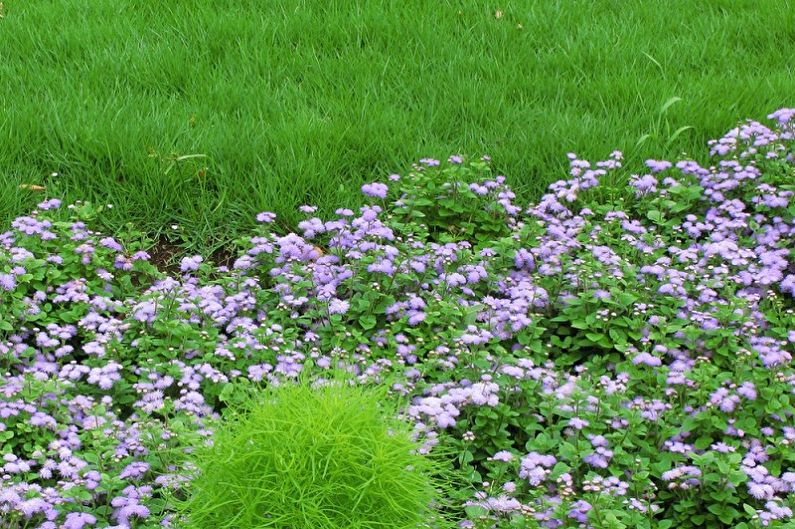
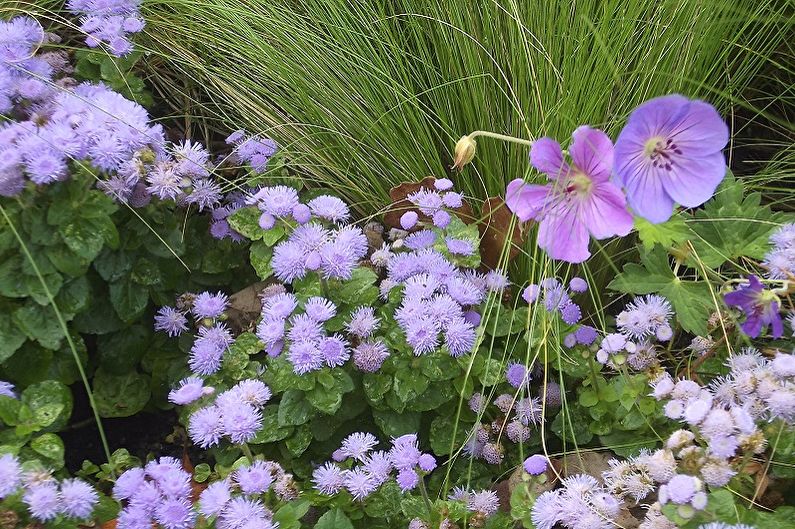
Humidity
Ageratum loves moist soil, but it is necessary to ensure that the water does not stagnate, do not abuse watering. Spraying even during hot periods is not allowed. In heavy rain it is recommended to cover the bushes. Culture may slow its growth in a waterlogged environment or not bloom at all. For domestic "pets" it is necessary to build a pot drainage.
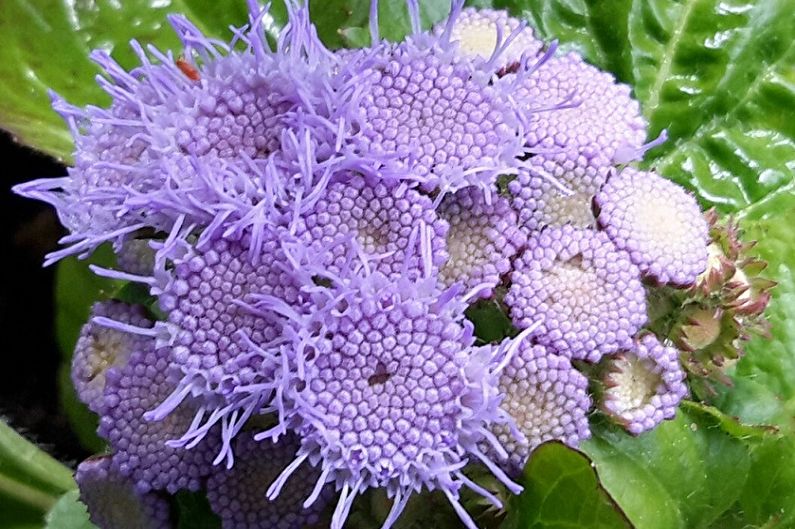
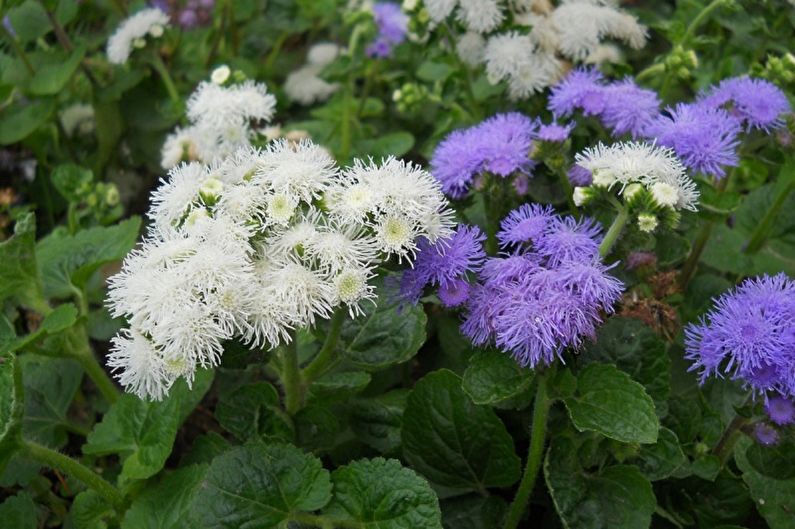
Watering
Although some varieties of ageratum are characterized by increased drought tolerance, it is still not worth checking the plant for endurance if you want to admire the lush and long flowering. Watering should be plentiful, but not excessive. In this case, moisture should fall exclusively under the root, and not on the leaves. After watering, it is better to loosen the earth around the bush for free air penetration to the root system, as well as to fertilize.
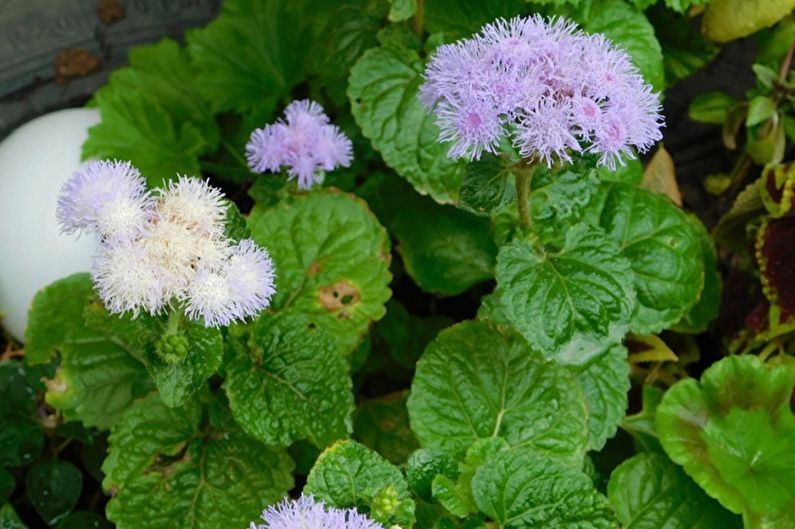
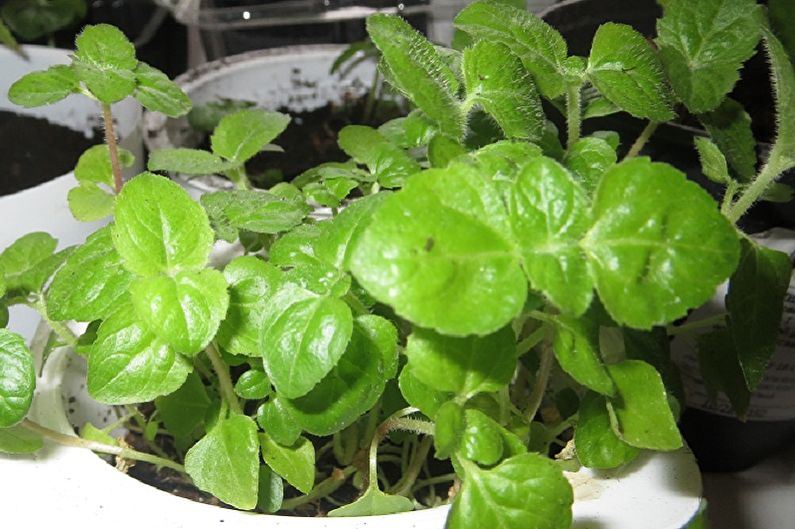
Fertilizers and fertilizing
In order for the culture to bloom magnificently with saturated colors, it must be fed with mineral and organic additives. This is done every two to three weeks. As organics, you can use the mullein infusion, but in no case do not use fresh manure, which can destroy the plant. Fertilizers are applied in moderation - overfeeding can cause the growth and brightness of foliage with a loss of ability to bloom.
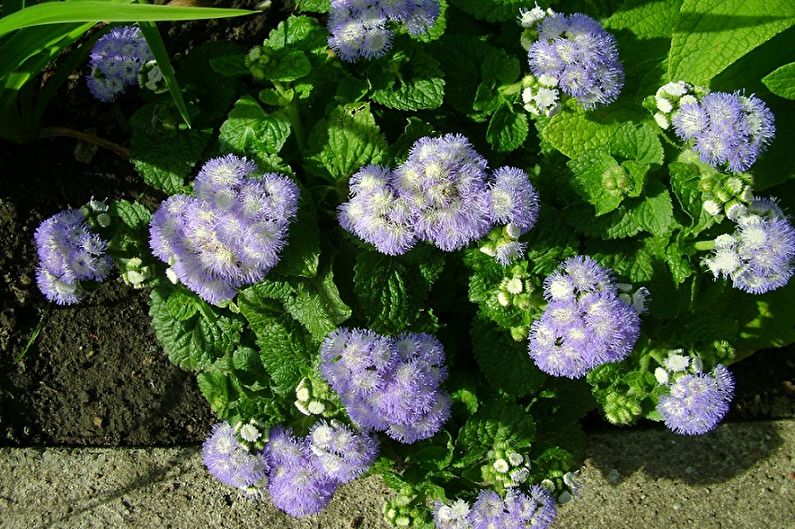

Pests and diseases
Although caring for the ageratum in the open field does not involve the application of special efforts, non-compliance with certain rules can lead to serious diseases. This applies, first of all, to waterlogging of the soil, as a result of which root rot develops. The plant is not treatable - it must be removed.
Ageratum may also suffer from the "cucumber mosaic." The ailment is manifested by the formation of yellowish segments on the leaves, wilted unblown buds. The plant can still be saved in the initial stages. It is necessary to immediately eliminate the damaged areas, and treat the remaining shoots with an insecticidal preparation.
In addition to diseases, the plant (both in the field and at home) can be attacked by pests. The most dangerous are whiteflies and spider mites. You can get rid of them by treatment with special drugs until complete destruction.
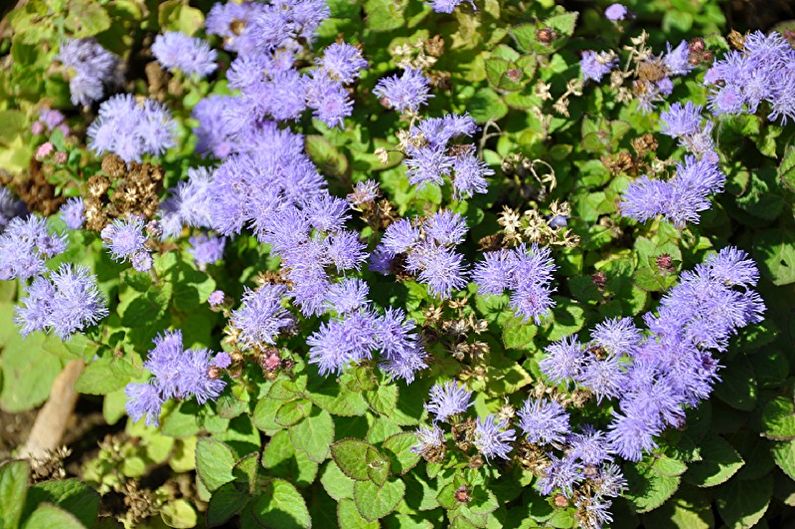

How to transplant ageratum
It is necessary to transplant the plant at the end of spring, when the danger of night frosts passes. You must select a site that is well lit by sunlight. If you plant a plant in the shade, its branches will randomly stretch. The result will be "disheveled", poorly flowering bushes. You also need to consider that the ageratum is afraid of drafts, and it does not have special requirements for the soil composition.
Before planting a bush, it is necessary to loosen the ground well, to dig holes of the same depth as the pots in which the bushes were located before transplanting. The distance between them should be at least 10 cm (in this case, it takes into account what the growth of an adult bush of one variety or another will be). The bush is installed in a hole, sprinkled with soil. Planting must be watered, and the soil can be additionally formed with mulch so that moisture is well preserved. The first flowering can be observed in a couple of months.
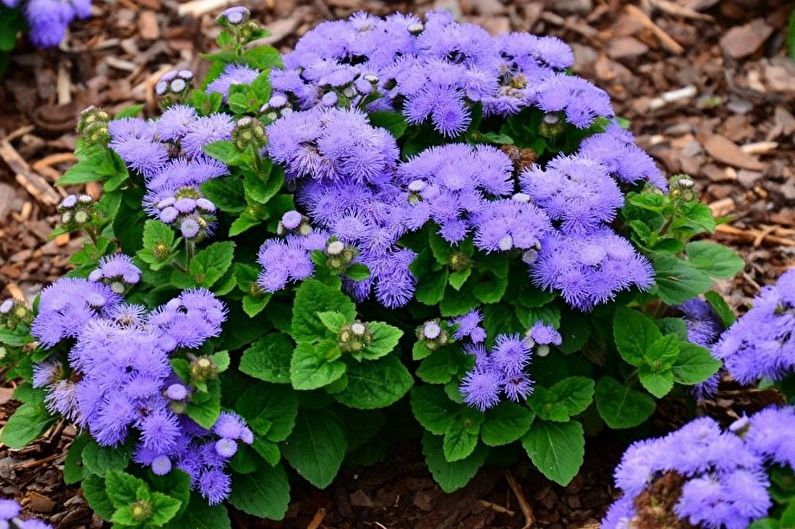
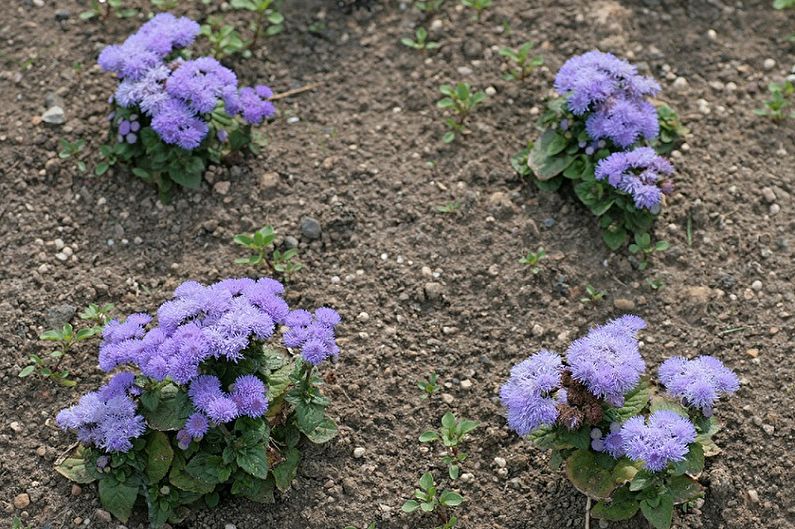
Propagation at home
The most common and effective way to grow ageratum is to sow seeds for seedlings.An interesting fact: each ripe fruit of the plant contains about six thousand seeds that can maintain their similarity for four years.
You can also propagate the culture using cuttings, which is also often used by gardeners.
Ageratum propagation by seeds
Planting seeds must begin in March, closer to April. To do this, it is necessary to prepare a container filled with soil, including peat, humus and sand (in equal proportions). Since the seeds are very small, they are sprinkled neatly in a small amount and do not sprinkle on top. Landing must be moistened, covered with a film (plastic bag) or glass, put in a warm place. Regularly air the greenhouse and keep the soil moist.
After 10-14 days, the first shoots will appear, and after another three weeks - the first true leaves. The cover by this time must be removed. You can dive into separate containers. Young sprouts need dry air, and the soil should be only slightly moistened so that they do not die from increased dampness.
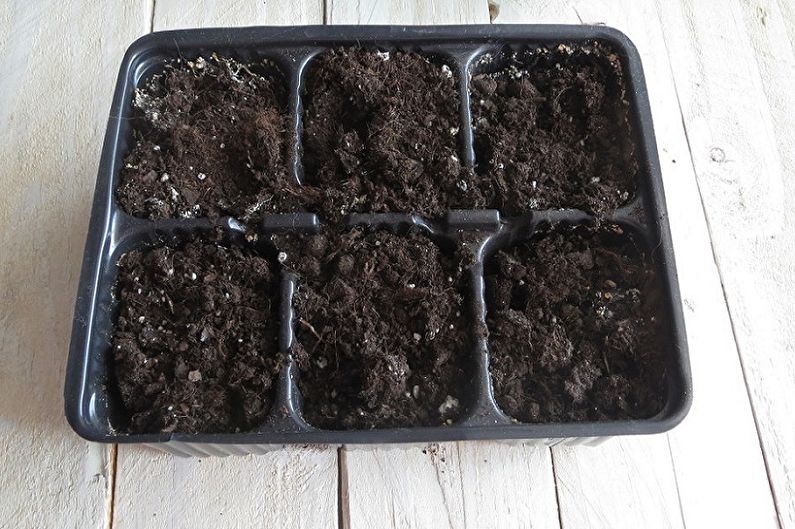

Ageratum propagation by cuttings
Material for propagation (mother liquors) is collected in late autumn and stored throughout the winter in a garden or greenhouse. Cuttings can also be cut in the spring. In the first half of spring (March-April), it is time to start planting cuttings in separate boxes or in the soil of greenhouse beds. They are seated to a depth of 1.5 cm and covered with a transparent cap (often its role is played by a transparent plastic bottle). After two to three weeks, the "roof" must be removed. At the time of rooting of young plants, it is necessary to maintain a constant temperature, not less than + 20С. It is worth noting that the shoots get stronger and take root quite quickly. Transplantation into the open ground is made in late spring.
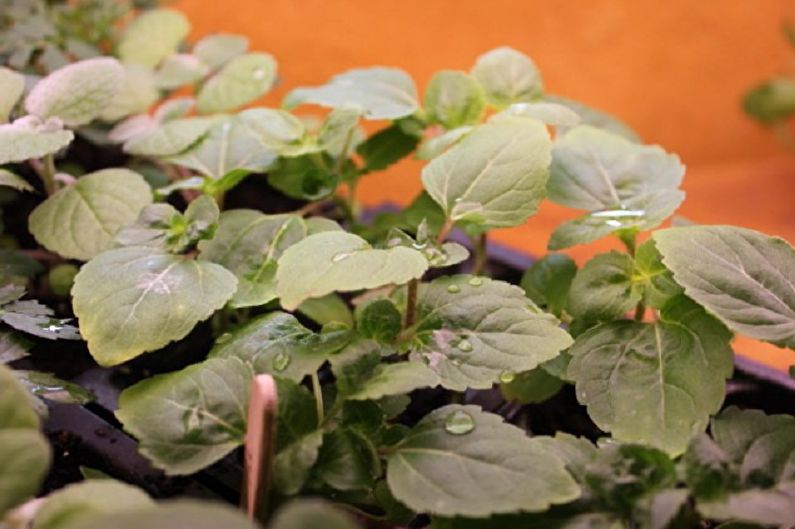
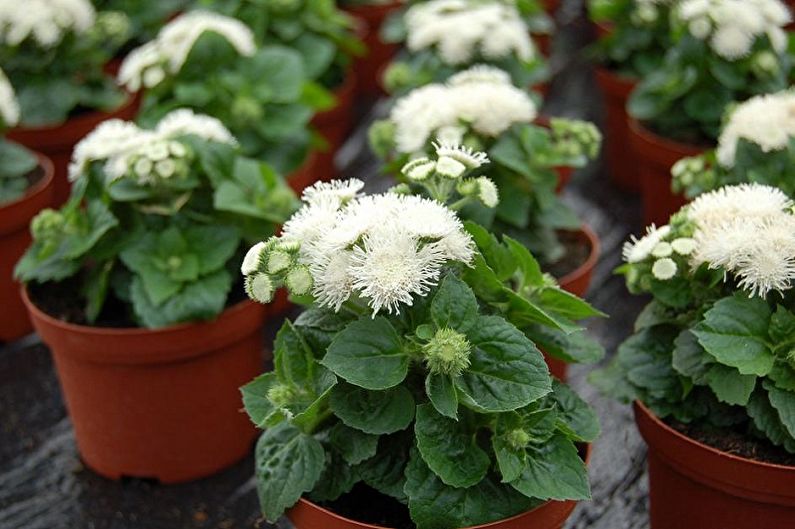
Ageratum - photo
The photo selection concluding our article will demonstrate the rich variety of lush ageratum species. Here you can familiarize yourself with how the plant finds its application in landscape design, and draw ideas for your own personal plot. Enjoy watching!
